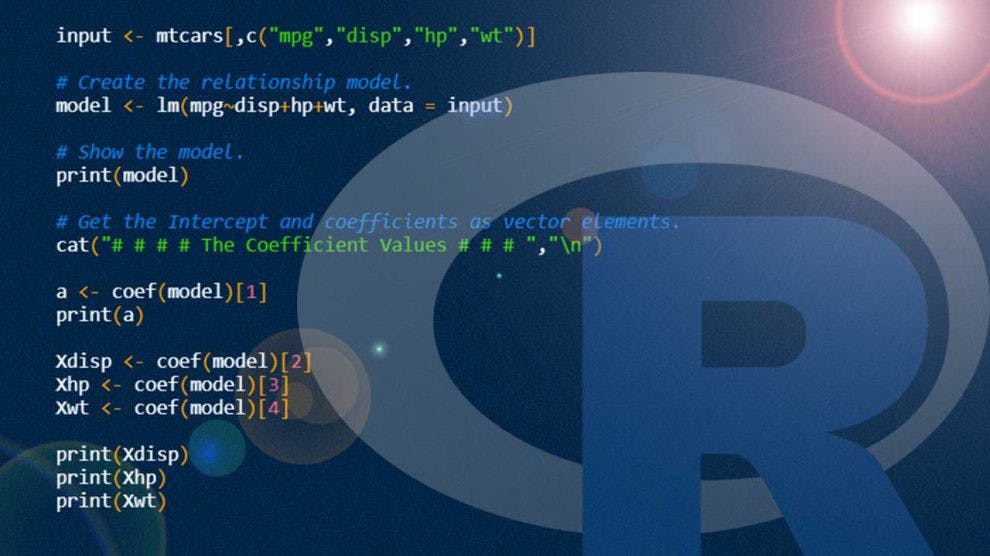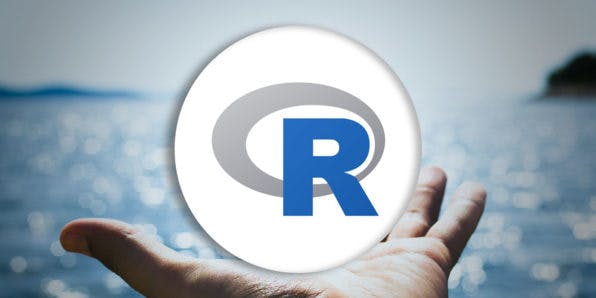"R" is a programming language used mainly for computational statistics and plotting data. Popular in the field of data analysis and statistics, R is an interpreted language, typically accessed through a command-line interpreter. The language, first implemented in the early 1990's, was developed by Ross Ihaka and Robert Gentleman at the University of Auckland.
R can be seen as a different implementation of S, a statistical computing language that was designed at Bell Laboratories by John Chambers and colleagues. We can think of R as an environment within which statistical techniques can be implemented. Even though R comes with a variety of features, it allows its users to add additional functionality by defining new functions. It is also one of 5 languages with an Apache Spark API.

R is available as Free Software under the terms of the GNU General Public License in source code form.
R and its libraries implement various statistical and graphical techniques, including:
- classical statistical tests
- linear and nonlinear modeling
- clustering
- spatial analysis
- time-series analysis
Majority of R's standard functions are written in R itself. However, for computationally intensive tasks, other languages like C++ and Fortran can be called at run time. R also allows the user to manipulate objects via Python ,C, C++, Java and .NET code. The language also has very strong object-oriented and static programing facilities.
R is extensible through packages. Basic package sets are included with the installation, though tens of thousands of additional packages are available to be installed in repositories like CRAN and GitHub.

The "Task Views" page on the CRAN website lists a range of tasks, in all sorts of fields like Finance, Genetics, High Performance Computing, Machine Learning, Medical Imaging, Social Sciences and Spatial Statistics, to which R has been applied and for which packages are available
R is an interpreted language which means that it does not need a compiler to make a program from the code. R directly interprets provided code into lower-level calls and pre-compiled code.
R has the ability to perform complex mathematical and statistical calculations on data objects of different kinds. It contains several packages allowing it to interact with databases like Roracle, RmySQL, Open Database Connectivity Protocol, etc. It can also handle both structured and unstructured data and provides a number of data operation facilities.
![Data+Visualization+with]+R.png](https://cdn.hashnode.com/res/hashnode/image/upload/v1636734203574/2BPO6awgp.png?auto=compress,format&format=webp)
R has wide applications. It can be used for database wrangling(the process of cleaning inconsistent data to enable convenient computation and further analysis). It can be used for interactive online data-driven storytelling and machine learning for building one-off models. Additionally, it can be used to distribute computing to process large data sets, help produce web pages, assist in web scrapping and generate reports in the form of documents or PowerPoint .
One of R’s strongest strengths is the ease with which it can produce well-designed publication-quality plots including mathematical symbols and formulae.
Initially, R was used via command line console. However, nowadays, users vastly prefer using IDEs like R Commander, RStudio, and Tinn-R. R can also be ran in multi-purpose IDEs (like Eclipse and Visual Studio )via various different plugins. As of now, Rstudio is the most polpular of these.
R has very strong local communities worldwide for users to share ideas and learn. There are a growing number of R events bringing its users together, such as meetups and conferences (useR!, WhyR?, conectaR, SatRdays).There are also R-Ladies groups which promote gender diversity and the R Foundation taskforce on women and other under-represented groups.

Is learning R worth it?
Tech giants like Facebook, Google, Microsoft, and Twitter are using the R language for their businesses.
Knowledge in R can not only help you secure a job in the IT industry but also opens the door to several other opportunities where data is used at a large scale to create analytics-based solutions such as healthcare, banks, education, financial sector, government departments, etc. R professionals are in high demand all over the world.
Keeping the rapidly increasing demand for data science and machine learning trends in mind, learning the R programming language is definitely worth your time and effort.

